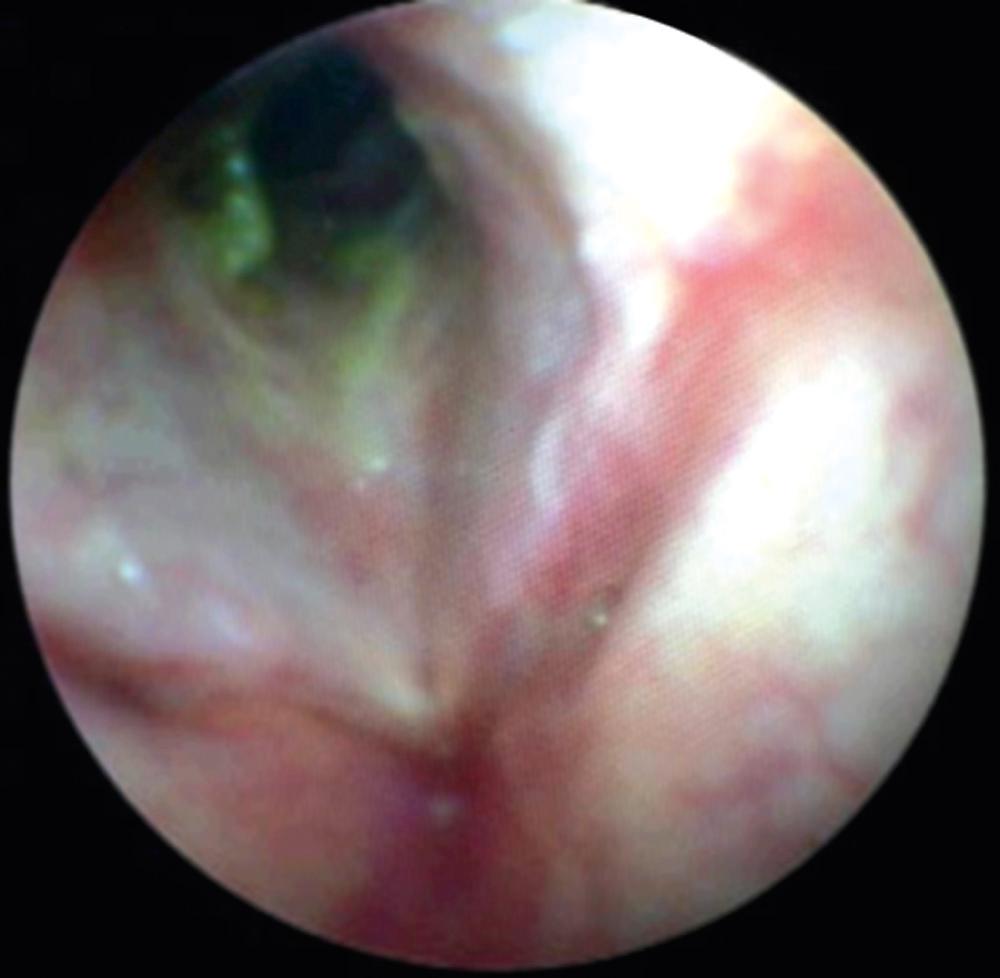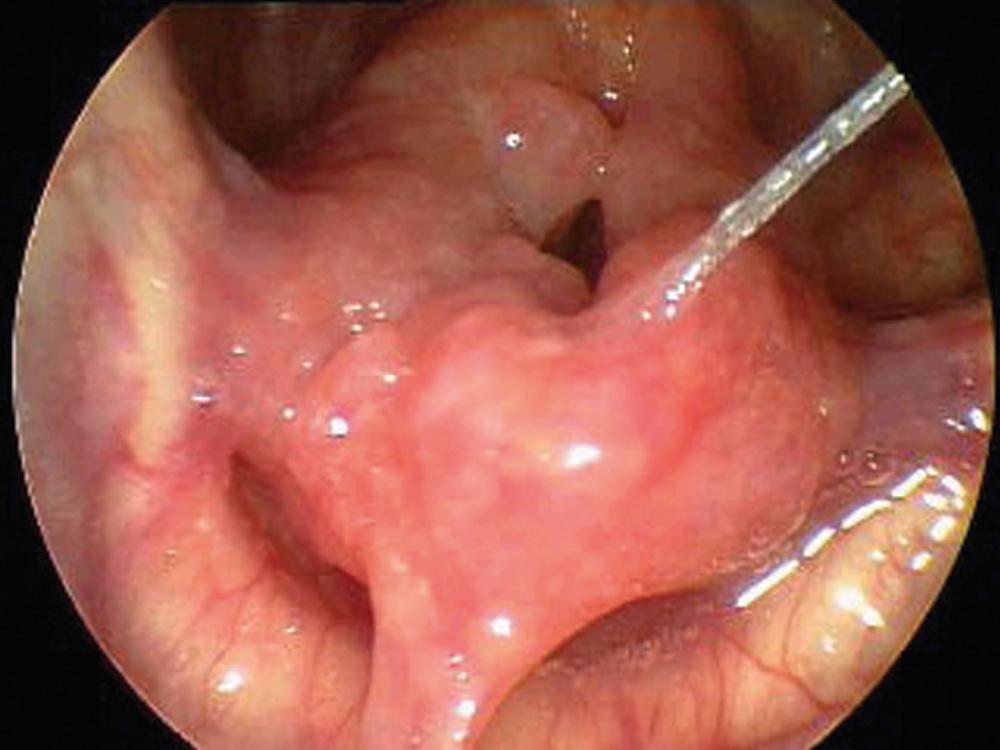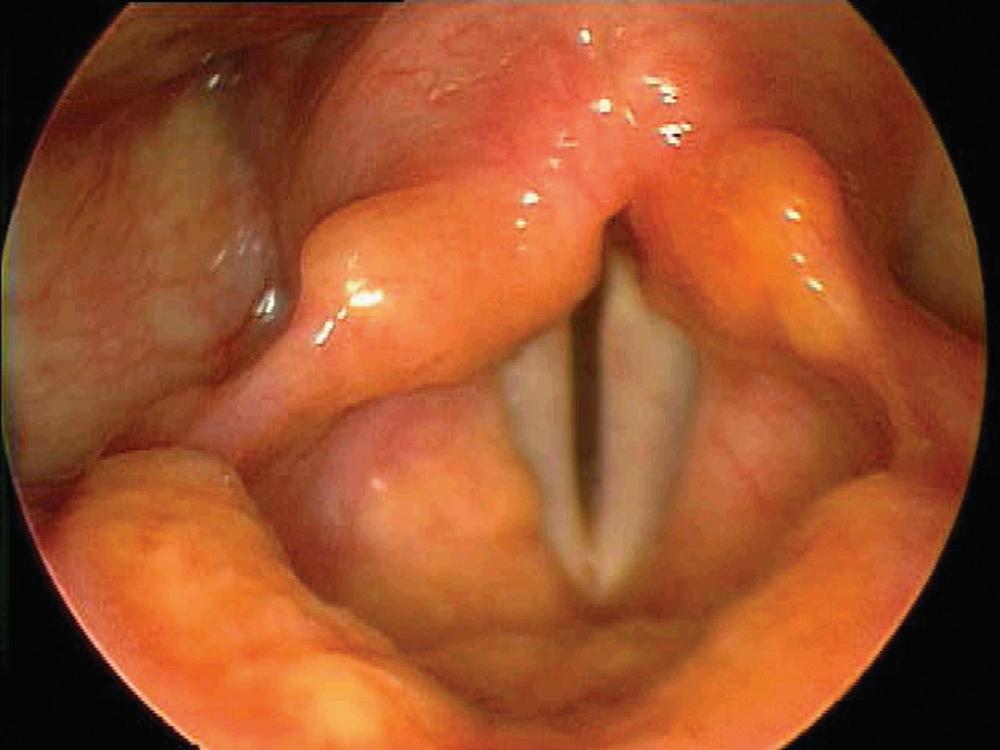Physical Address
304 North Cardinal St.
Dorchester Center, MA 02124
The spectrum of laryngeal and tracheal symptoms of systemic disorders can vary from mild to severe and may include hoarseness, cough, stridor, and airway compromise.
Many systemic disorders that affect the larynx may mimic laryngeal carcinoma.
A systemic process should be suspected in a hoarse patient with no obvious lesion.
Many systemic disorders require a multidisciplinary approach to achieve optimal results, and treatment may involve a speech pathologist, rheumatologist, infectious disease specialist, and otolaryngologist.
Granulomatosis with polyangiitis (GPA), formerly Wegener granulomatosis (WG), is a multisystem inflammatory disease characterized by necrotizing granulomatosis and necrotizing vasculitis of small arteries, arterioles, capillaries, and venules. It primarily involves the upper and lower respiratory tracts and includes the larynx and trachea but also the kidneys. Other areas of involvement are the oral cavity, skin, joints (polyarteritis), and orbit. In the airway the subglottis and trachea are more commonly affected ( Fig. 11.1 ).

Airway involvement usually occurs in the presence of systemic disease, but it may be the only sign of the illness. Specifically, 10% to 20% of patients with GPA come to medical attention with subglottic involvement and subsequent stenosis. As a result, patients may be incorrectly diagnosed as having asthma when stridor is mistaken for wheezing. Glottic involvement manifests as voice changes. Most patients with GPA have a positive antineutrophil cytoplasmic antibody (ANCA) test result, with cytoplasmic ANCA proteinase 3 staining being positive with greater frequency than perinuclear/nuclear ANCA myeloperoxidase staining. Up to 20% of patients who have the disease with respiratory involvement have negative ANCA test results.
Common symptoms of GPA of the airway include hoarseness, cough, hemoptysis, dyspnea, stridor, and wheezing. Progressive respiratory difficulty with stridor can be the first signal of airway involvement, although pulmonary function testing with flow-volume loops can be helpful in distinguishing a fixed extrathoracic lesion (i.e., subglottic stenosis) from parenchymal disease. The typical pattern of flattening of both inspiratory and expiratory phases is seen in fixed lesions.
Management of GPA is complex and usually requires a multidisciplinary approach. Systemic manifestations are treated with systemic corticosteroids and other immunomodulating agents, depending on disease severity. First line treatment is with steroids plus cyclophosphamide. Once remission has been achieved, methotrexate or azathioprine is used. Protocols are currently being used with rituximab infusions to help quiet the active inflammation and maintain remission, reducing the need for steroids. Airway disease in GPA presents a complex challenge because it frequently behaves independently of the systemic disease; treatment should be tailored to the symptoms and level of distress.
In the presence of acute airway obstruction, tracheostomy placement can be lifesaving. However, with current endoscopic techniques, many patients can be managed without tracheostomy. Although techniques differ, dilation of the stenosis with injection of intralesional steroids is the mainstay of treatment, although use of topical mitomycin C after dilation has been reported. Depending on the severity of narrowing or the level of the stenosis, dilation can be achieved with rigid dilators or balloon dilation. The carbon dioxide laser has also been used to treat subglottic stenosis. In patients with difficult stenoses, stents or tracheostomy can be used. Finally, resection and reanastomosis have been used to remove the stenotic segment, but this step is usually reserved for mature stenoses and inactive disease.
Relapsing polychondritis is a rare inflammatory disease of unknown etiology that causes episodic inflammation of cartilaginous structures throughout the body. Commonly affected areas are the ears, nose, eyes, larynx, bronchi, costal cartilages, and articular joints. Males and females are affected equally, with an annual incidence of 3.5 per million. All ages can be affected, but peak onset is somewhere in the fourth to fifth decade. Only approximately 14% of patients come to medical attention with airway symptoms, but 50% to 55% of patients eventually have them. Diagnosis is based on the presence of multiple criteria, first described by McAdam and colleagues and later modified by Damiani and Levine. The most common finding is bilateral auricle chondritis; respiratory involvement is less common but more damaging. In 25% to 35% of patients with relapsing polychondritis, an autoimmune process precedes.
Involvement of the respiratory tract can have serious consequences. Typically, patients come to the physician with hoarseness, cough, choking, wheezing, dyspnea on exertion, stridor, or tenderness of the laryngeal framework. Mortality rates are reported anywhere from 10% to 50% when the laryngotracheobronchial tree is involved. The airway can be involved at various levels, which makes treatment difficult. Upper airway obstruction can occur with laryngeal involvement, and collapse of the trachea or bronchi happens when the more distal airway is affected. Respiratory distress may occur by either of two mechanisms: (1) collapse of the central airway from destruction and fibrosis of the laryngeal and tracheal cartilages or (2) peripheral airway narrowing from inflammation and cicatricial fibrosis. Patients may ultimately require tracheostomy for airway stabilization.
Imaging can be helpful in the diagnosis of relapsing polychondritis. Plain films can demonstrate the nonerosive arthropathy seen in the disease, airway fluoroscopy has been implemented to evaluate for central airway collapse during expiration, and magnetic resonance imaging and computed tomography (CT) are complementary in the diagnosis. Typical CT findings include subglottic stenosis, tracheobronchial luminal narrowing, dense calcification and thickening of tracheal cartilages, peripheral bronchial narrowing, and bronchiectasis ; the most common finding is increased attenuation and smooth thickening of the airway walls ( Fig. 11.2 ). Magnetic resonance imaging is very sensitive for visualization of soft tissue inflammation, which tends to be hyperintense on T2-weighted images and to enhance with gadolinium on T1-weighted images.

Histologic examination shows chondritis with a mixed inflammatory cell infiltrate composed of polymorphonuclear leukocytes, lymphocytes, plasma cells, and eosinophils, depending on the stage at which the lesion is sampled. The primary change is the loss of matrix mucopolysaccharides followed by a secondary perichondrial inflammatory reaction.
In addition to surgical measures, relapsing polychondritis is managed with high-dose corticosteroids. Maintenance therapy consists of methotrexate and low-dose corticosteroids. Azathioprine, cyclophosphamide, cyclosporine, and dapsone have been tried in refractory cases. The use of infliximab, which blocks tumor necrosis factor-α, has been reported in the treatment of refractory cases.
Sarcoidosis is a chronic granulomatous disease of unknown etiology. It is characterized by noncaseating granuloma formation with clusters of tubercles in the same stage of development, and it can affect any organ system within the body. Head and neck manifestations are reported in 9% of patients with sarcoidosis. The first histopathologic diagnosis of laryngeal involvement was confirmed by Poe in 1940, despite its earlier description in the literature. The estimated incidence of laryngeal sarcoidosis is between 1% and 5%. Although rare, laryngeal sarcoidosis can be the only manifestation of the disease.
Symptoms are generally mild despite extensive tissue involvement. The progression of the disease is slow and is characterized by many relapses and remissions. With respect to laryngeal involvement, symptoms typically include hoarseness, dyspnea, stridor, dysphagia, and cough. However, patients can be asymptomatic. Rarely, airway obstruction may be the presenting symptom.
The supraglottic larynx is affected most often, followed by the subglottis. The vocal folds are frequently spared. The epiglottis is the most common subsite, followed by the arytenoids, aryepiglottic folds, and false vocal folds. When airway involvement is suspected, laryngoscopy is a key step in the diagnosis.
The classic appearance of the larynx affected by sarcoidosis is described as “turbanlike thickening” ( Fig. 11.3 ). This thickening is due to the pale, pink, diffuse induration and swelling of the supraglottis. Flexible fiberoptic examination may reveal the presence of edema and erythema, punctate nodules, mass lesions, and ulcerations. Biopsy of affected areas shows lymphocytic infiltration and noncaseating epithelioid granulomas. The pathologic findings can be confused with those of other granulomatous diseases, and additional studies and cultures are recommended.

Treatment of the laryngeal manifestations of sarcoidosis can be achieved with systemic corticosteroids. For lesions that are small and well circumscribed, some clinicians have performed intralesional injection of corticosteroids. When airway obstruction is evident, excision with the carbon dioxide laser or microdébrider can prevent the need for a tracheostomy. It is preferable to treat lesions when they are nonobstructing so as to avoid the need for a tracheostomy. Because of the risk of laryngeal involvement, it is recommended that patients with sarcoidosis who begin to have airway symptoms be evaluated by an otolaryngologist.
Amyloidosis is an idiopathic disorder characterized by the extracellular deposition of insoluble fibrillar proteins. Interestingly, the origins of these fibrillar proteins are their normally soluble variants. These deposits were initially described by Rokitansky in 1842. The first laryngeal case was described by Borow in 1873.
Laryngeal amyloidosis is usually localized and associated with immunoglobulin localized light-chain amyloidosis (LLA) and rarely found in association with an underlying disorder, such as multiple myeloma. In a retrospective review the most common sites of involvement were urothelial tissue (21%) and the larynx (14%). The upper airway and trachea were the most common sites.
Amyloidosis is classified on the basis of three parameters: (1) the fibrillar protein making up the deposits, (2) the precursor protein from which the amyloid protein was derived, and (3) the clinical description of the associated disease process (primary, secondary, myeloma-associated, familial, or hemodialysis-associated amyloidosis).
Presenting symptoms vary with the amyloid deposition. The most common location within the larynx is deposition in the true and false vocal folds and the ventricles ( Fig. 11.4 ). Frequent complaints revolve around hoarseness or cough, but if deposition is significant, dyspnea or stridor may also be seen. Pharyngeal involvement was most likely to be associated with pain.

Biopsy of the primary lesion is the mainstay of diagnosis. On light microscopy, amyloid exhibits an acellular, amorphous, homogeneous, eosinophilic appearance after hematoxylin and eosin staining. The classic findings of bright green birefringence under polarizing light microscopy are seen after staining with Congo red. Other diagnostic tests that should be performed are complete blood count, liver function tests, renal function studies, and urinalysis to look for the Bence Jones protein. A referral to a hematologist or oncologist is appropriate, given the association of amyloidosis with multiple myeloma.
Treatment is focused on maintaining airway patency, improving hoarseness and/or pain while minimizing the effects on voice quality. In symptomatic patients, excision is the most common treatment modality performed during suspension microlaryngoscopy and/or tracheoscopy. Microdébrider excision and carbon dioxide laser excision are two modalities currently used. Radiation therapy has also been used in patients with large airway disease, especially in patients with tracheal disease. Recurrence of airway amyloid deposits is common and may be managed with reexcision and/or radiation therapy. Rarely, tracheostomy is needed. Long-term survival is equal to the general population; however, lifelong follow-up is recommended to monitor for local regional recurrence and disease progression.
Become a Clinical Tree membership for Full access and enjoy Unlimited articles
If you are a member. Log in here